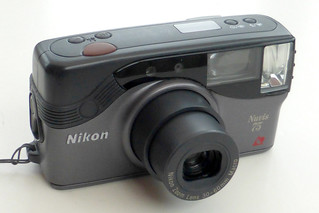
In most respects, this is just another ultra-basic plastic 35mm camera, but this one has the added feature of a close up setting, a little lever which shifts the focus of the lens to 0.6-1.2m. This particular example is branded by Barclaycard, and was presumably some kind of corporate freebie.

















































